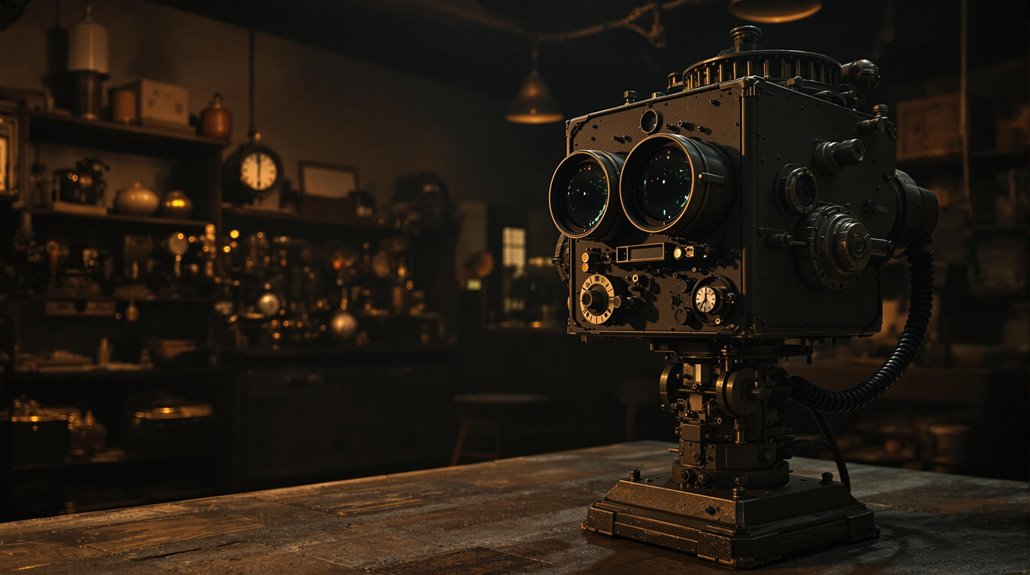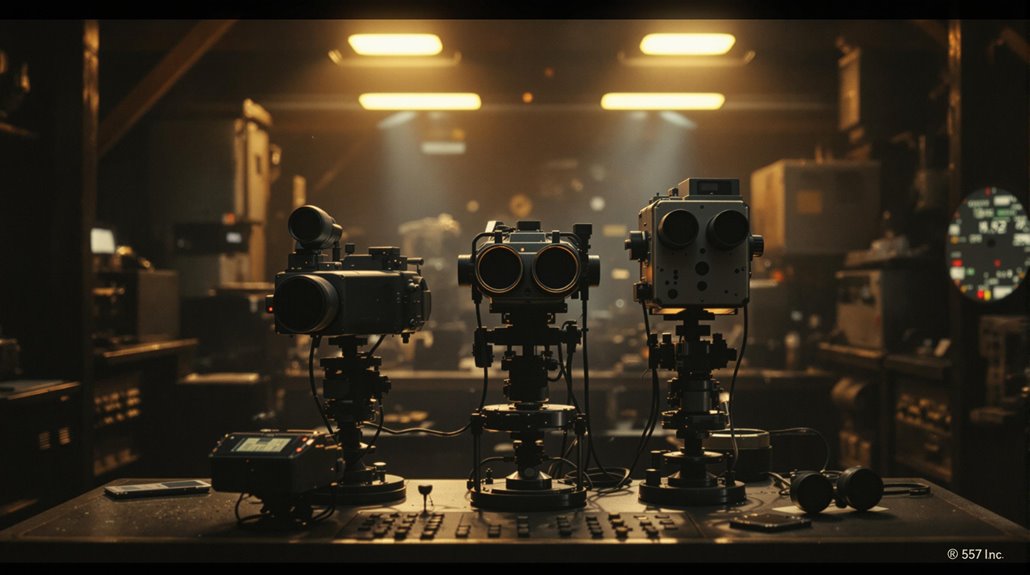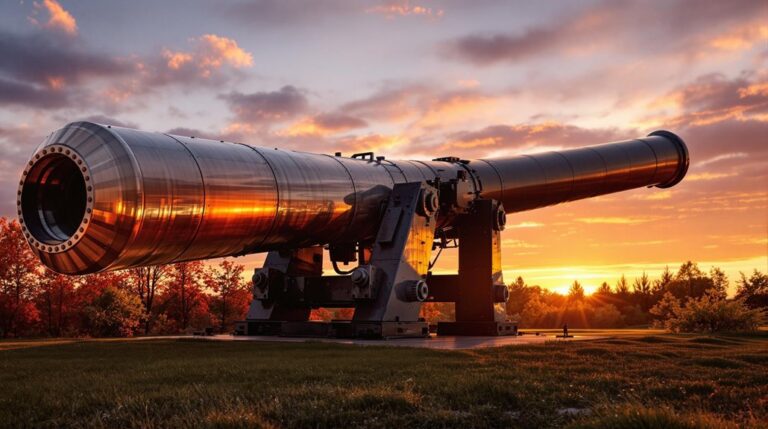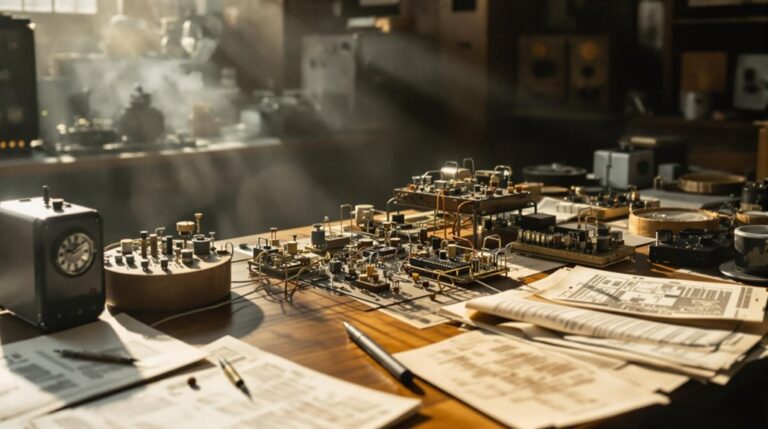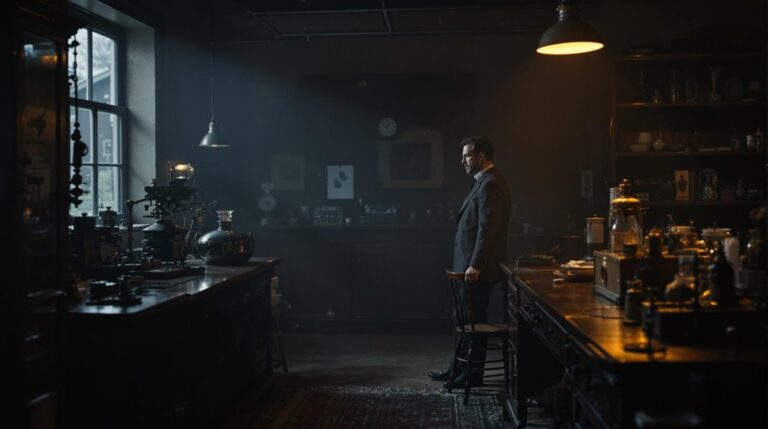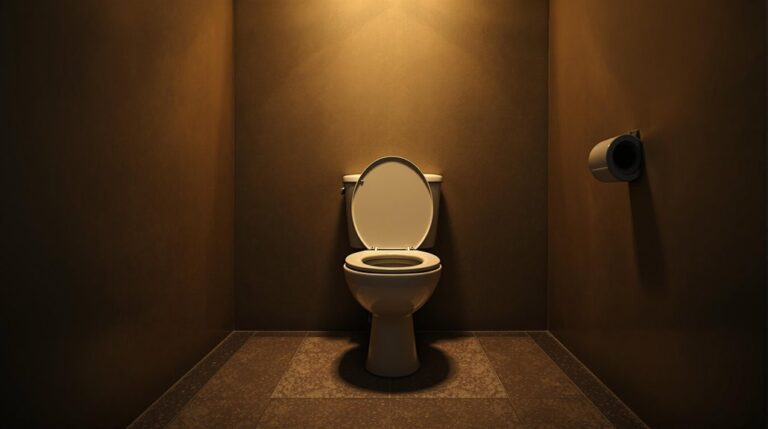Who Invented Night Vision? The Tech That Transformed Warfare
Like Prometheus bringing fire to humanity, Kálmán Tihanyi illuminated the darkness with his groundbreaking "Radioskop" invention in 1926. You've probably used or seen night vision technology in movies, but you might not know how this revolutionary capability evolved from a Hungarian inventor's dream to a game-changing military asset. The story of night vision weaves through World War II's shadowy battlefields, Cold War tensions, and modern warfare's high-tech arena, forever changing how we operate after sunset.
The Birth of Night Vision: Kálmán Tihanyi's Breakthrough
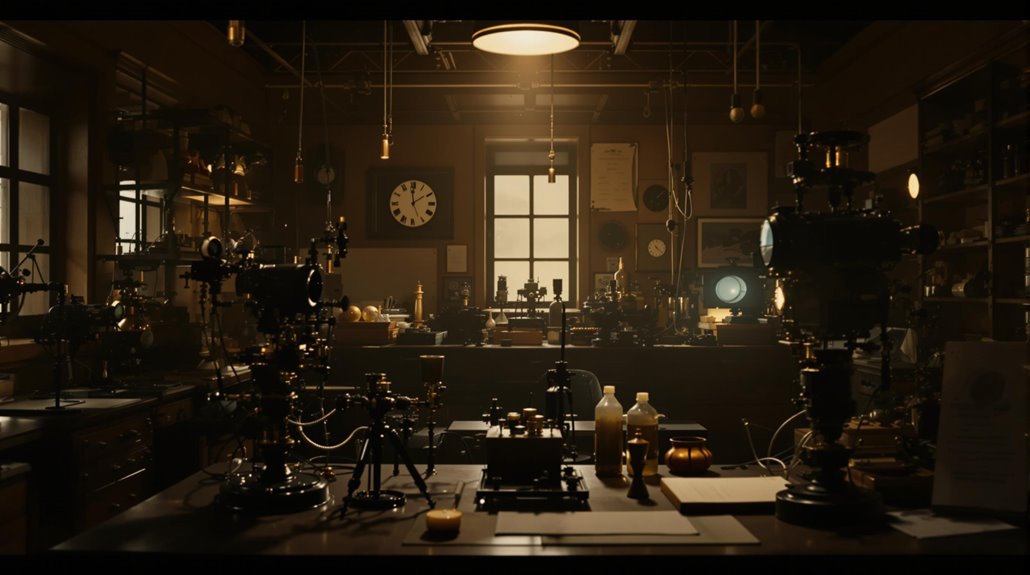
While television pioneers of the early 20th century focused on mechanical systems, Hungarian inventor Kálmán Tihanyi pursued a revolutionary electronic approach that would later enable night vision technology.
The German Army first put night vision to military use with their Sperber FG 1250 equipment in 1939.
You'll find that Tihanyi's inventions stemmed from his deep understanding of Maxwell's equations and his discovery of an unknown physical phenomenon during his studies.
In 1924, he developed charge storage technology, which became the foundation of his groundbreaking "Radioskop" patent in 1926. This 42-page document detailed three versions of a cathode ray tube television system that could maintain photoemission between scans.
His work laid the groundwork for the development of first generation devices that would provide 1000x light amplification, though early versions were still bulky and impractical.
World War II: The First Combat Applications
Two major military powers pioneered night vision technology during World War II, marking the first practical combat applications of these devices. Germany's AEG developed the "Vampir" system in 1935, while the U.S. Army created the "Snooperscope" in the 1940s. Both systems used active infrared technology to illuminate targets at night.
Despite their technological limitations, these devices proved their combat effectiveness, particularly when U.S. forces deployed them in the Pacific Theater, inflicting significant casualties on Japanese forces. This led to the development of first-generation passive devices during the Korean War. These early systems relied on infrared searchlights for illumination, making them less covert than later models.
However, you'll find that these early systems had serious drawbacks: they were bulky, power-hungry, and required external infrared light sources that could give away the user's position.
While not widely deployed, these first-generation night vision devices demonstrated the potential of this revolutionary technology in warfare.
Cold War Innovations and Military Evolution
During the height of the Cold War, the arms race between the Soviet Union and United States sparked unprecedented advances in night vision technology.
The race to achieve supersonic flight capabilities created urgency for developing technologies that would work in all conditions. This technological competition drove rapid innovations as both superpowers sought tactical advantages in potential conflicts. The AN/PVS-4 scope became standard equipment for U.S. military forces during this era.
The most significant breakthroughs came with these generational improvements:
- Introduction of microchannel plate technology in Gen 2 devices, making them smaller and more reliable
- Development of gallium arsenide photocathodes in Gen 3, dramatically improving sensitivity
- Integration of auto-gating systems to prevent overexposure in varying light conditions
- Combination of night vision with other military technologies like lasers and thermal imaging
You'll find these Cold War innovations transformed warfare by enabling forces to operate effectively in darkness, leading to the widespread adoption of night vision devices by military forces worldwide.
From Generation 0 to Modern Technology
The evolution of night vision technology spans nearly a century, beginning with AEG's groundbreaking experiments in the 1930s. From Generation 0 devices requiring infrared illuminators to today's advanced digital systems, you'll find remarkable technological evolution in this field.
Early Generation 0 devices equipped German forces during WWII, including 50 Panther tanks and infantry units using the "Vampir" system. The German military gained a significant advantage by conducting nighttime attacks when their opponents were less prepared.
The Vietnam War introduced Generation 1 technology, featuring the AN/PVS-1 Starlight Scope with 1,000x light amplification.
Generation II devices marked significant progress with micro-channel plates achieving 20,000x amplification, while Generation III systems utilize gallium arsenide photocathodes for up to 50,000x brightness gain.
Modern systems often incorporate white phosphor technology to provide enhanced contrast and color detail in dark environments. Today's digital night vision systems integrate with augmented reality and AI algorithms, transforming military operations and civilian applications alike.
Transforming Modern Warfare and Special Operations
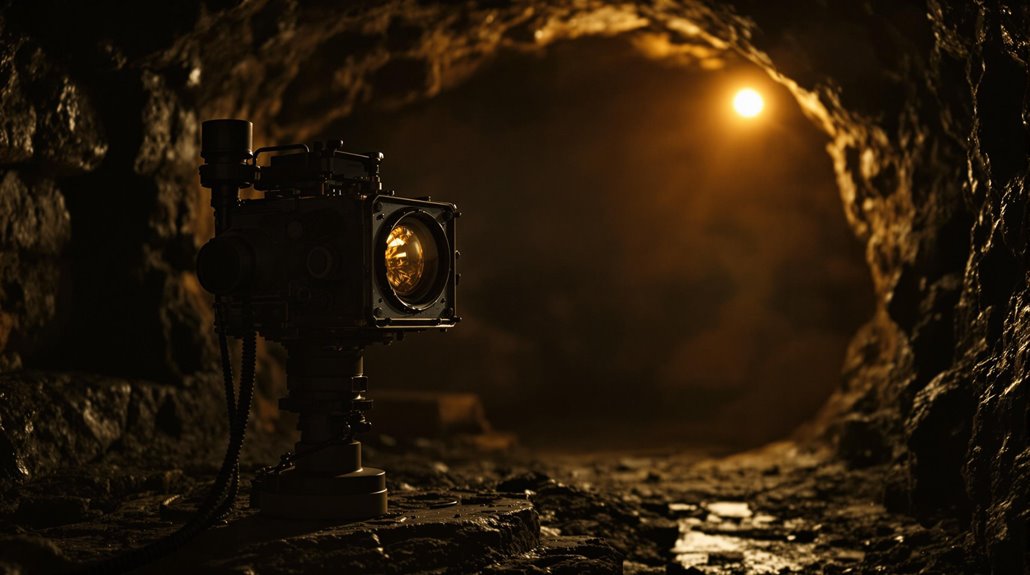
Since its widespread military adoption, night vision technology has revolutionized modern warfare and special operations by fundamentally altering how forces engage, maneuver, and execute missions in low-light conditions.
This tactical evolution has dramatically improved operational efficiency, enabling forces to maintain superiority in darkness while minimizing risks to personnel.
During Operation Desert Storm, the military's image intensifying NVDs provided unprecedented advantages in nighttime combat operations.
However, recent trends show that the historic advantage of "owning the night" has diminished as potential adversaries rapidly close the technological gap.
Key advantages that have transformed modern warfare include:
- Enhanced situational awareness, allowing you to detect and engage threats before they spot you
- 24/7 operational capabilities, expanding mission possibilities across all lighting conditions
- Precise special operations execution, as demonstrated in high-stakes missions like the Bin Laden raid
- Improved coordination between ground and air units during nighttime operations
These capabilities have redefined military strategy, though they've also sparked an ongoing technological race as adversaries develop countermeasures.
Beyond the Battlefield: Commercial and Civilian Uses
While night vision technology revolutionized military operations, its applications have expanded far beyond combat zones into everyday civilian and commercial life.
You'll find this technology protecting businesses through 24/7 surveillance systems that combine thermal imaging with AI for automated threat detection. Wildlife monitoring has been transformed, enabling researchers to study nocturnal animal behavior and protect endangered species from poachers without disturbing natural habitats. Maritime navigation has become significantly safer with night vision systems helping ships avoid collisions in busy waterways at night.
Perhaps most significantly, automotive safety has seen dramatic improvements. Night vision systems in vehicles have reduced nighttime accidents by up to 70%, detecting pedestrians and animals in low-light conditions. The latest developments in metasurface technology are making these systems more compact and efficient than ever before.
You can now access this technology yourself through consumer products like night vision binoculars, home security systems, and even smartphone attachments, making what was once military-exclusive technology a practical tool for everyday use.

